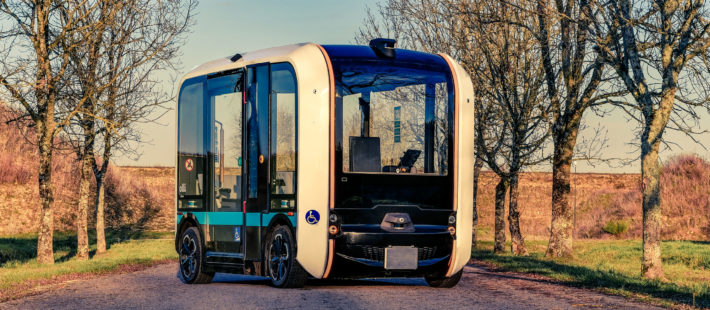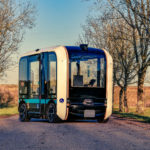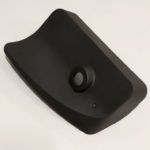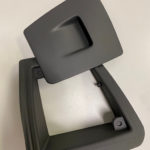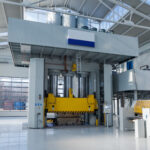The ground mobility company Local Motors’ autonomous electric vehicle Olli 2.0 includes some 3D printed parts manufactured by CRP Technology in Windform composite materials.
The Modena-based company, which has been involved in professional 3D printing with Windform composite materials since 1996, was contacted by the EMEA management of Local Motors to build some parts mandatory in order to obtain individual approval for Europe.
Carlo Iacovini, General Manager EMEA, Local Motors, states
“Olli is operating in campuses, stadiums, industrial districts and local communities around the world. To approve deployments in Europe, it needed some additional components, not required in US market”. Among them, there were the windshield wipers and parts.
To add the wipers Local Motors opted for the retrofit technique, or re-adaptation process, through an integration on the 2.0 model. They started from the original project, and they adapted it to their needs. These phases (retrofit and integration) were carried out in Italy, based on the original design produced by the Engineering Team in Chandler.
Once identified the parts to manufacture – the motor cover and the washer reservoir flap valve of the wipers system – Local Motors turned to CRP Technology, an European company.
After a careful study of the projects, CRP Technology experts opted to create the parts using professional 3D printing / Powder Bed Fusion process with composite polymers fibers-reinforced (also known as Selective Laser Sintering) and two materials from the Windform® TOP-LINE range:
- the polyamide-based composite material Windform XT 2.0 Carbon fiber reinforced for the wipers starter motor cover (component with mainly aesthetic purpose, but also functional, able to contain / support the oscillatory movement of the motor)
- the polyamide-based composite material Windform LX 3.0 Glass fiber reinforced for the washer reservoir flap valve (component with mainly functional purpose, and partly aesthetic)
Wipers starter motor cover
It is a rectangular part in Windform XT 2.0 material, a sort of protruding oblique parallelepiped with a puncture for the placement of the wipers arm and a smaller one for the water hose.
The main function of the part is aesthetic, but considering its position (next to the motor) it has to:
- guarantee electromagnetic compatibility
- resist the oscillating movement of the wiper arm and blade
- withstand the continuous stress and vibrations caused by the traffic circulation on roads
- preserve the electrical unit from external agents.
For these reasons, the part needed to be made of a material that would provide stiffness and strength combined with high lightness, ensuring the creation of an accurate, reliable and durable application. Windform® XT 2.0, one of the top-of-the-range materials from the Windform TOP-LINE for its mechanical properties, and representing a perfect choice for functional applications, was therefore chosen.
Wipers washer reservoir flap valve
The component, in Windform LX 3.0, consists of a rectangular structure frame and the flap valve equipped with magnets to access the wipers washer reservoir. Its main purpose is to:
- ensure quick access to the wipers washer reservoir positioned behind
- protect it from external agents
- resist the continuous stress and vibrations caused by the traffic circulation on roads
Furthermore, it also has to be accurate in detail. It therefore needed to be manufactured in a material that guaranteed reliability, good resistance and aesthetic return: Windform LX 3.0 was chosen for its excellent properties and the wide spectrum of use.
After manufacturing the parts, CRP Technology carried out the final tests and delivery.
Afterwards Local Motors conducted on the “modified” Olli some electromagnetism tests in the anechoic chamber. The EMC testing concerned the whole windshield wipers with excellent results. No critical issues were proposed in regard to the 3D printed parts in Windform composites.


